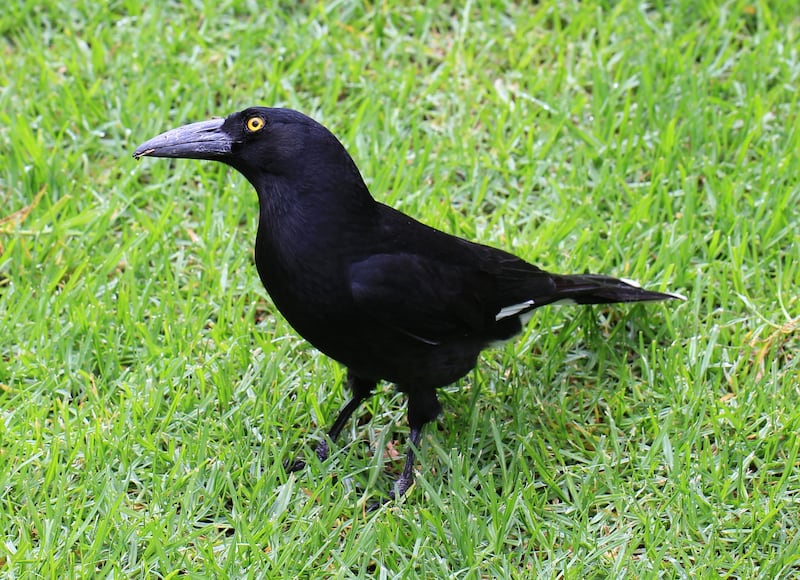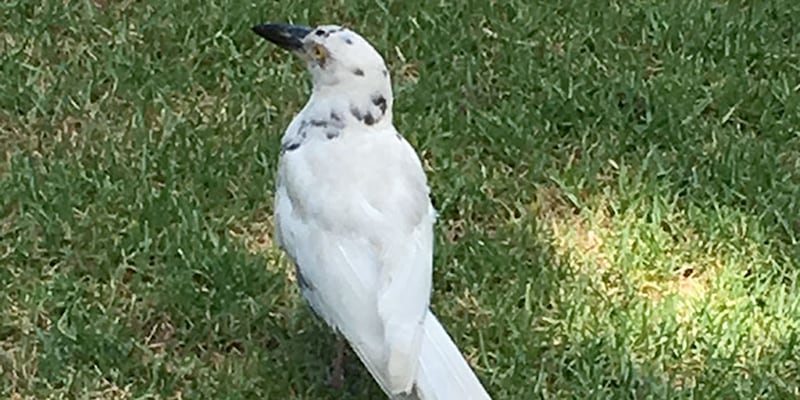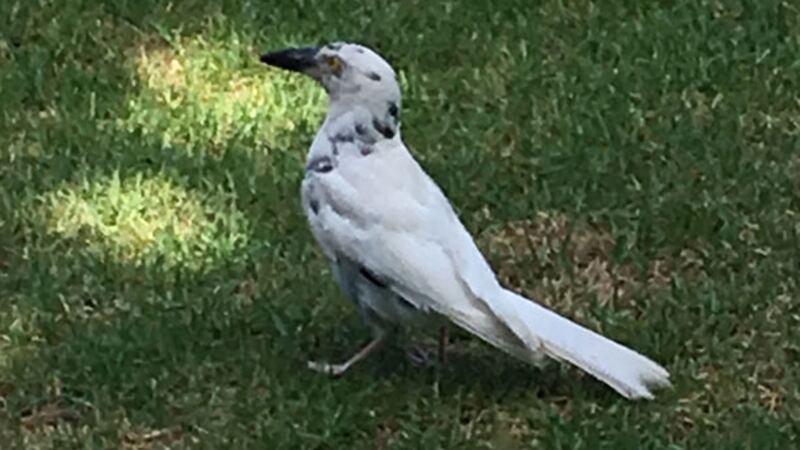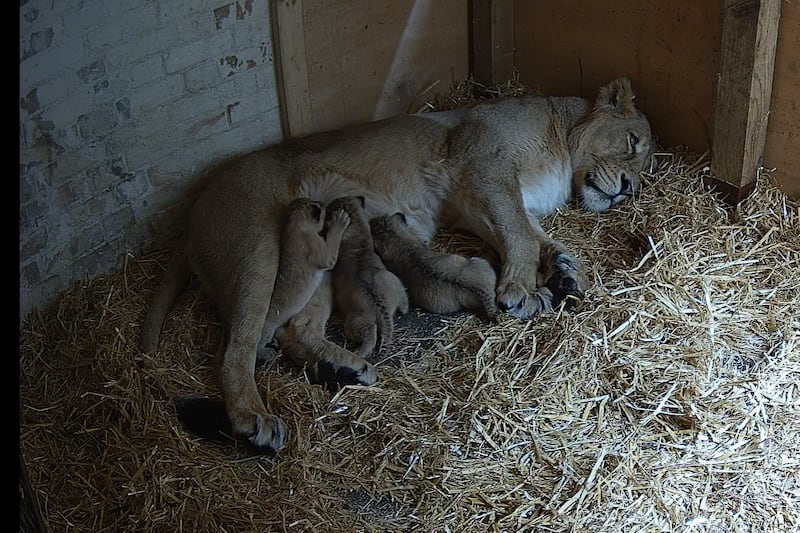A bird with a rare genetic condition has been spotted at a botanical garden in Australia and she needs your help in finding a new name.
The pied currawong, which is a passerine bird native to eastern Australia, is a regular sight at The Royal Botanic Garden in Sydney.
Pied currawongs, named for the often-heard “curra-wong” call, are generally black in colour but this bird has almost completely white plumage because of a genetic condition known as leucism.
You may have seen this unique-looking bird in the Garden recently and for those wondering, it’s a Pied Currawong with…Posted by The Royal Botanic Garden, Sydney on Wednesday, January 3, 2018
The team at the botanic garden said: “The extremely rare bird stands out from the rest because of its near colourless plumage and yellow eyes.”
In a Facebook post, the team asked: “We want to give this special feathered-friend a name – what do you think it should be called?”
While the genetic condition makes animals look different, leucism, which is a reduction of skin pigment, doesn’t affect their wellbeing.

Dr John Martin, an applied ecologist working with The Royal Botanic Garden, said: “Leucism is often mistaken for albinism because it looks like there isn’t pigmentation or melanin present, but the difference is that traces of colour are present.
“This pied currawong is rare because it has leucism but still has small patches of coloured feathers and yellow eyes.

“The plumage has a washed-out appearance instead of a complete lack of colour like an albino bird.”
The pied currawong is currently feeding two large chicks that recently fledged.
Dr Martin added: “Pied currawongs tend to stay in the same areas year-round so it’s likely visitors have seen it before, but because it is currently breeding season for the species, sightings have increased over the past few weeks.”








